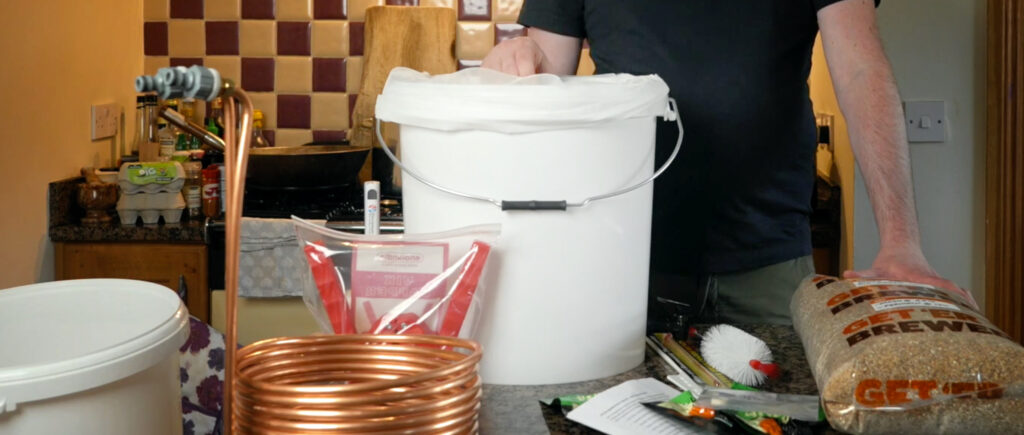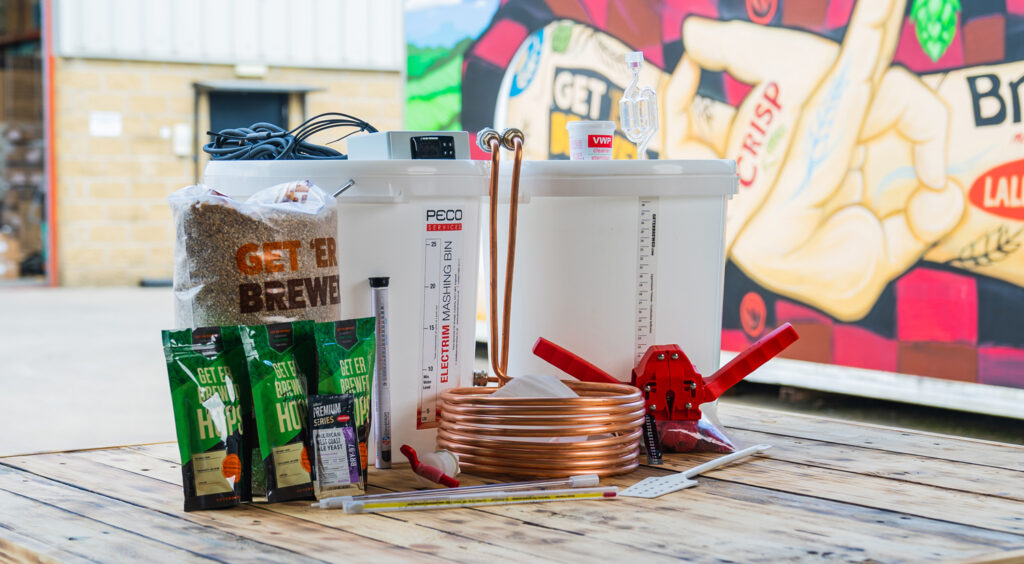
Brew in a bag (or BIAB) is a perfect way to get into all-grain brewing. This is a beginners guide on the pros and cons of BIAB and what is needed to get started.
What is brew in a bag?
Brew in a bag basically using a meshed bag for your mash. The bag is placed directly into the kettle used for boiling with the full volume of water needed for the batch. The grain (or grist) is placed in the bag for the mashing process. Once the mashing is done, the bag is lifted out taking the spent grain with it. The rest of the boiling is carried out in the same kettle. The method eliminates the need to sparge, which means no worries of “stuck sparge”. The normal process of all-grain brewing is carried out at this point.
The equipment needed.
Brew in a bag uses basic and inexpensive equipment. This is a big plus for anyone starting with all-grain brewing. To start, you will need an appropriately sized bag. You should use a bag intended for this purpose. So don’t go raiding the linin cupboard for a pillowcase. It needs to be strong and durable to handle the boiling and the weight of the grain. You will be using more grain than a normal all-grain process, so get one that will suit your brew batches.
You will also need an appropriate kettle. A very large pot or a purpose-made kettle will do the trick. Make sure you can secure your bag to the kettle somehow. The bag should be able to fit over the edge of your kettle, then use something like clips or string to secure the bag.
Because of the minimal amount of equipment, you won’t need as much space as conventional methods. This small footprint is great for starting out.
To make it easier, we have a few BIAB Kits available on our website. From full startup kits to upgrade kits. All kits come with an All-Grain kit to get you going straight away.
UK – GEB – BIAB KITS
EU – GEB – BIAB KITS

Brew in a bag issues
One issue specific to the BIAB method is in lifting the bag out of the kettle. Firstly, it’s heavy. The bag will be full of soaked grains. You will need to be able to lift the bag out of the kettle, sometimes above head height. Secondly, the bag will need to be able to drain for a few minutes into the kettle so that you can get as much wort as possible.
Luckily, it’s a well-used method and there are many tried and tested ways to overcome this issue. A basic way is to get someone to lend a hand. Lift the bag out, and slip a grate under the bag so the bag can drain into the kettle. It would also be helpful to have the kettle as low as possible. Another way is to use a pulley system to pull the bag out, then just let it hang out for a while above the kettle. It is more elaborate but can be a bit easier. Whichever way you do it, you will be dealing with hot water and grains. So just be careful.
Another issue is potential reduced extract efficiency. Extract efficiency is the amount of sugar extracted from the grain. Typically grains are sparged to wash sugars into the boil kettle, which is not needed for BIAB. So some sugars may remain behind. To overcome this, you could crush the grains a bit finer. This can offset efficiency losses associated with skipping the sparge.
It’s in the bag.
The great thing is this is a well-used process, with some long time brewers using it as their preferred method. It is also a common stepping stone in all-grain brewing. This means there is tons of info online, YouTube videos and forums dedicated to brewing in a bag.
All-grain brewing is the best way to unlock your brewing potential and to start experimenting with recipes. Brew in a bag is the perfect way to start.
Have a look at our YouTube video, giving you a rundown of our BIAB kit.